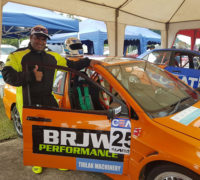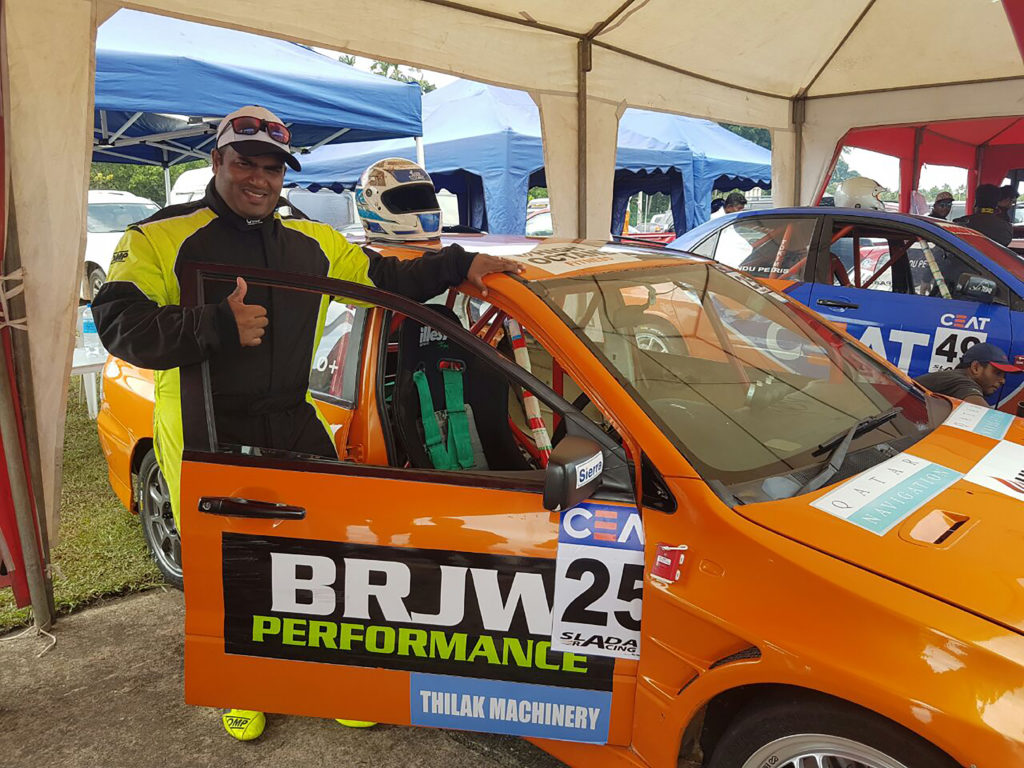
Darin Weerasinghe, a renowned racing driver and powerlifting champion, has a lot to look forward to in the next few years. Despite his busy schedule, he graciously took time off to talk to us about his passion for and breaking records in both the sports he pursues, and his charity work involving water which we will find out more about as we read on…
EM: Tell us how your racing career began
DW: My father, Bandula Weerasinghe was one of the best motor racers of his time and naturally I wanted to follow in his footsteps. I started racing at 16, beginning as a novice and won second place in my first race which was at the Katukurunda track. That’s when I knew racing was in my blood, but I had to complete my studies, so I went on to the University Of Warwick, UK, where I obtained my BEng. and Masters in Engineering. Once I returned to Sri Lanka, I started pursuing motor racing more intensely; I went on to the Super Car category which all the best drivers in Sri Lanka race in and I’ve been racing in that category for about 7 years. I’m proud to say that I’ve achieved quite a bit of what I wanted to; I have won a lot of major races and I also have the lap record at Katukurunda track. I also possess the Mahagastota Speed Hill Climb record; that’s where racing first started in Sri Lanka. I have also raced in almost every class possible and now I race in the highest class.
EM: When did you develop a passion for powerlifting?
DW: I got into that during my time in university; I had always wanted to be strong, so I started working out with people much stronger than me. I took part in a university weight lifting competition which I won and this was an encouragement to pursue this sport as well. I started doing powerlifting competitively alongside racing when I returned to the island. At my first event in 2010, I came third, so I went on to compete in the 105kg class and I’ve set up 7 national records over the course of the years. Last year I won a bronze at the Asian Championship in India; I also have the highest bench-press record in Sri Lanka and I’m the only person to pass 200kgs. I took part in the Singapore powerlifting competition and won a gold medal from 2014 to 2016. I captained the national team this year to Indonesia and we performed well; my hope to win a place on the podium at the world championship in Brazil next year and compete in the 2020 Olympics.
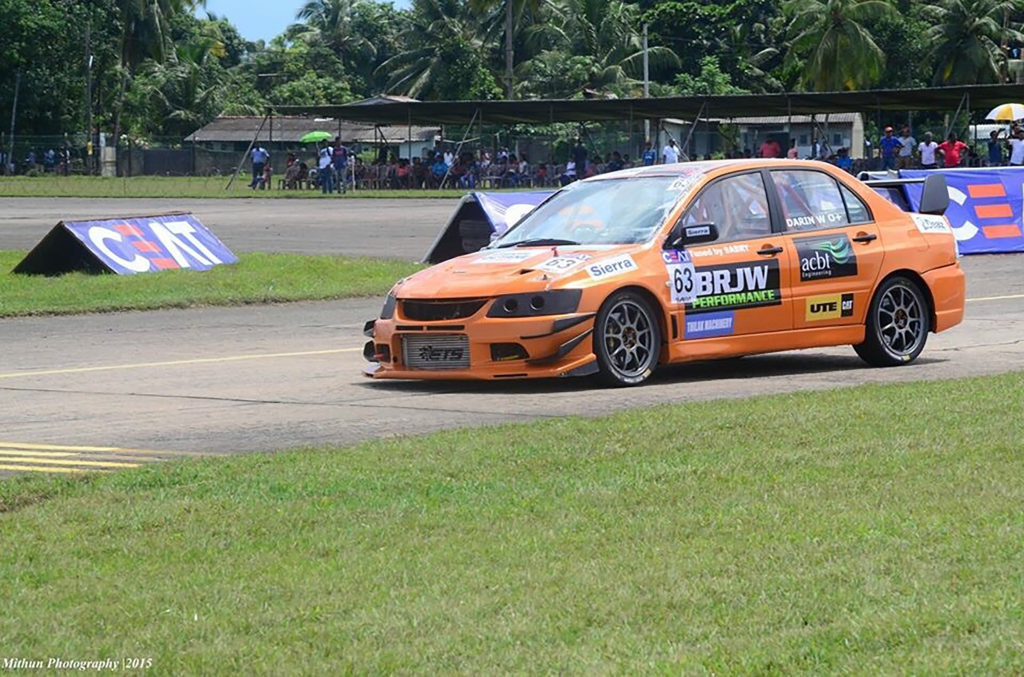
EM: Do you feel that the training you do for powerlifting affects your racing performance?
DW: Not that much. It’s true that racing drivers are normally expected to be fit and agile, while powerlifting is a strength sport and demands a different type of training in order to lift heavy as most of the weight we move around is between 250-300kgs. However, I’ve managed to maintain myself adequately enough to pursue both sports, simply by training to bring my weight down when I’m focused on racing and work on gains when I have any powerlifting meets coming up. I still have my agility because I do a lot of functional training not just with weights. In all the races I’ve won, I feel that I’ve been ahead of the pack due to my fitness so that I can keep focusing on my concentration no matter how harsh the condition is. Training for powerlifting has brought a lot of discipline into my life. Even with racing, you need to have focus and tunnel vision, so this discipline has really helped me tremendously. I don’t think my training for powerlifting has affected my racing performance, because I still keep winning races and I’m known as one of the drivers to beat at racing events.
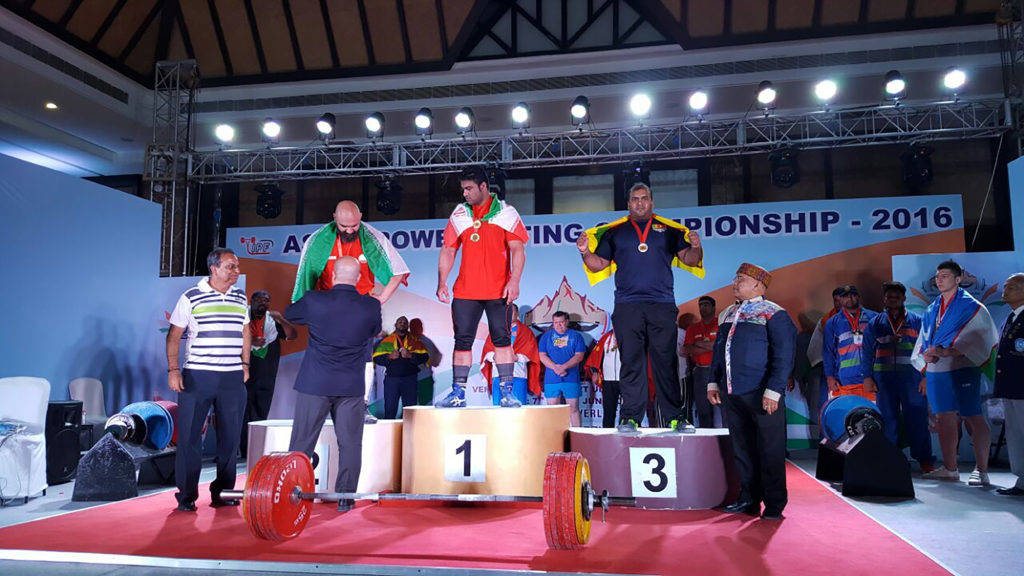
EM: Is there any particular eating plan you follow for both your sports?
DW: Not exactly for racing, but for powerlifting, yes there is an eating plan I stick to. I rarely drink or do much partying due to my training, since every time you go out and drink with your friends, that sets you back a month in training so I have to miss out on a lot of get-togethers and stuff. It is a big sacrifice to make, but at the end, it’s worth it. The time I have I use it to spend time with my kids. My wife and family is very supportive and I’m lucky to have their encouragement.
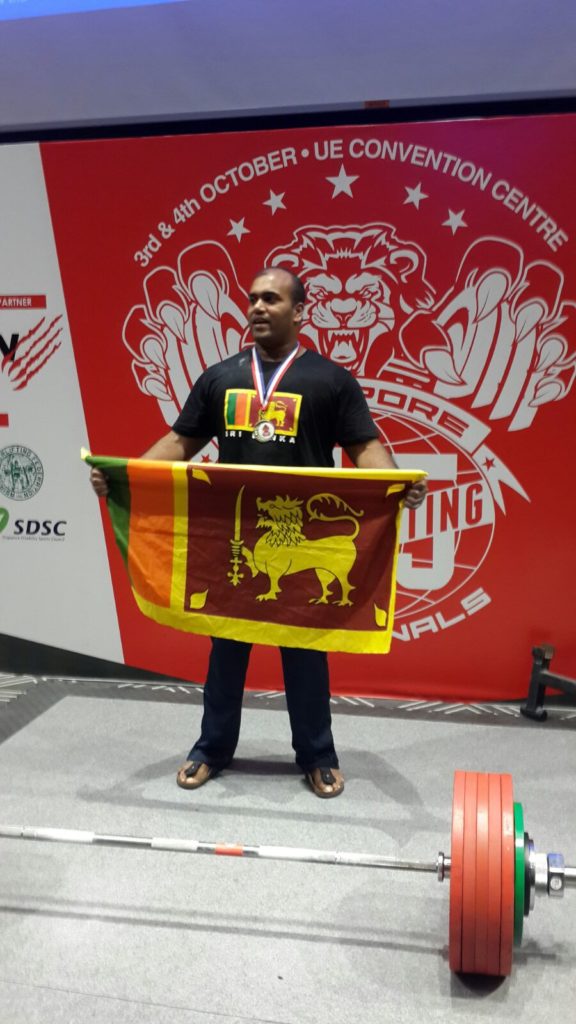
EM: Which sport do you find more challenging?
DW: Winning at powerlifting is much more challenging and difficult than racing because winning at racing depends a lot on your machine, but winning at powerlifting is basically all you. You need to train 4-5 months ahead of a powerlifting event just to lift a few kilos more. However racing is still a very difficult sport which puts a lot of mental pressure. So I enjoy and I take my learning from both to help improve myself.
EM: Is it true that most racing drivers actually drive more responsibly than non-racers?
DW: Yes definitely. I drive slowly on the road. Actually it’s a very good idea for people who like to drive fast to get into motor sports to get rid of that eagerness on the track and you actually end up respecting speed because you put yourself through a lot by competing with other drivers; the last thing you want to do is drive recklessly on the road.
EM: Have there been any dangerous incidents that occurred during racing?
DW: I have been blessed with not having anything big, but I have had a few incidents during practice and been saved by some unknown Power. There was a time I was practising in Radella and I should have gone down a 200ft precipice, but the car got stuck in a tea bush and I came out alive. So that has been my closest experience.

EM: Are there such hazards in powerlifting?
DW: Yes, when you do a maximum lift, you’re putting your body under tremendous pressure. Preparing yourself to lift 200-300kgs, your blood pressure goes up and it’s a big strain on your heart. You are prone to injury, particularly the lower back. I’ve had my fair share of injuries; at one time, it was so bad, doctors thought I won’t be able to walk, but two weeks later with the right amount of training and physiotherapy, I broke a Sri Lanka record. Powerlifting is as dangerous and strenuous sport as racing. I’ve seen people get injuries that have been very significant, but I take a lot of precaution in my training and I’m very well planned building up to a competition.
EM: Tell us more about Lifesaver
DW: My sister and I both studied in the United Kingdom and when we returned to Sri Lanka, we both wanted to do something for the country and we realised that is still a great need for clean drinking water. We also saw that 1 ½ million people are affected with this chronic kidney disease because they don’t have access to fresh drinking water, so we tied up with a British company called Lifesaver. The technology is in a can where you can put any kind of water into it and you can get pure drinking water and this doesn’t require any electricity. So we got the agency for that product and we’ve been bringing it down to Sri Lanka and doing a lot of social projects to provide clean drinking water to individuals who have no access to it. I have worked with over 200 farmers in Mahiyangana and what we hope to do in the future is get this product out to lower income folk, so that we can help out these people.
Written by Michelle Alles
